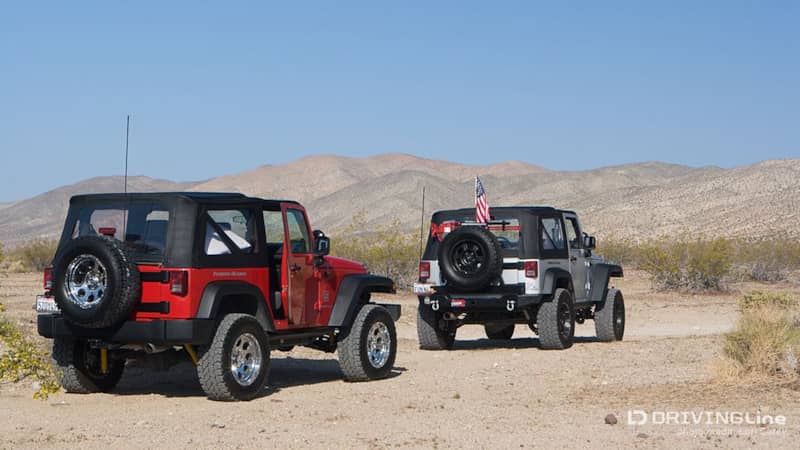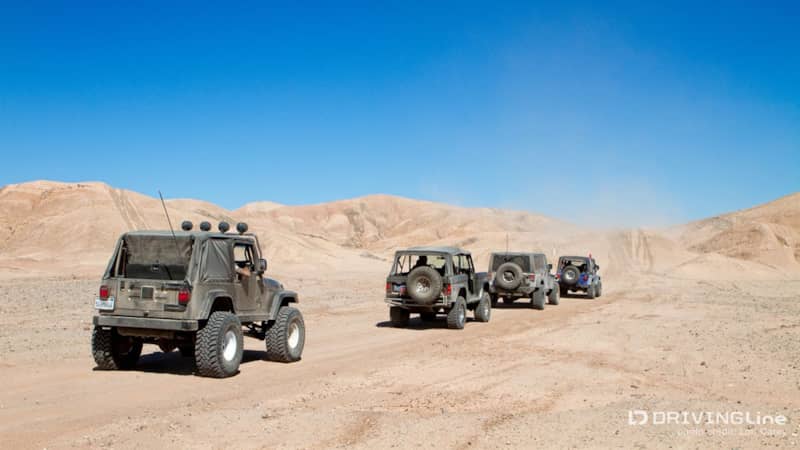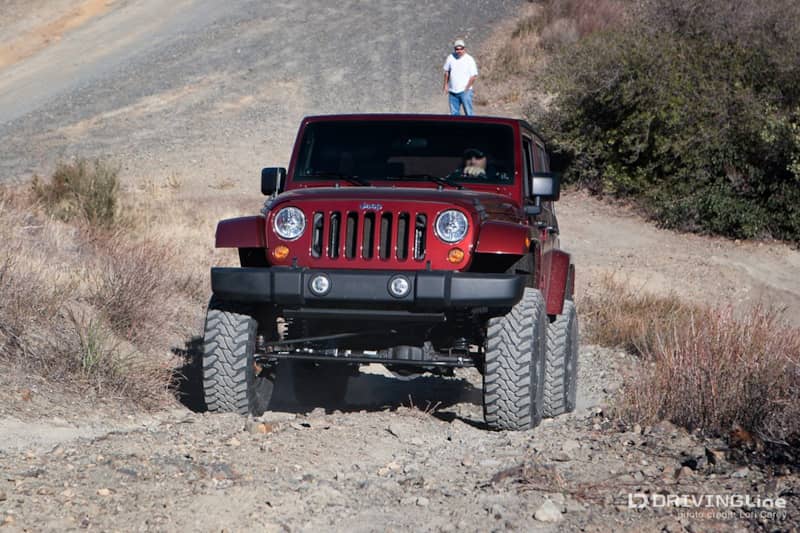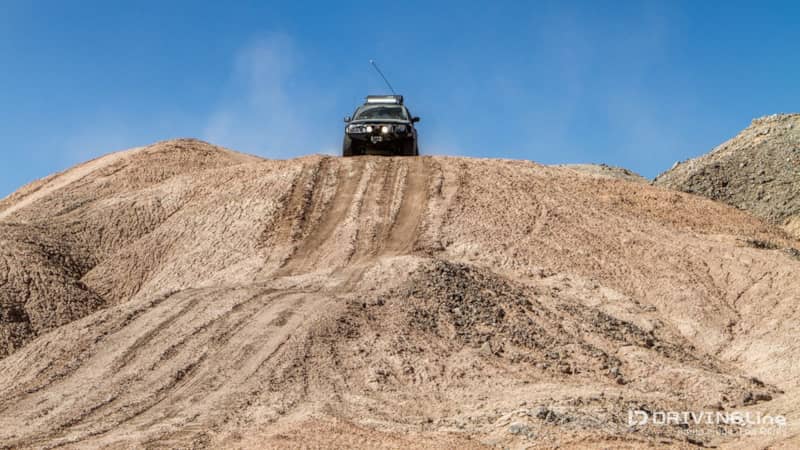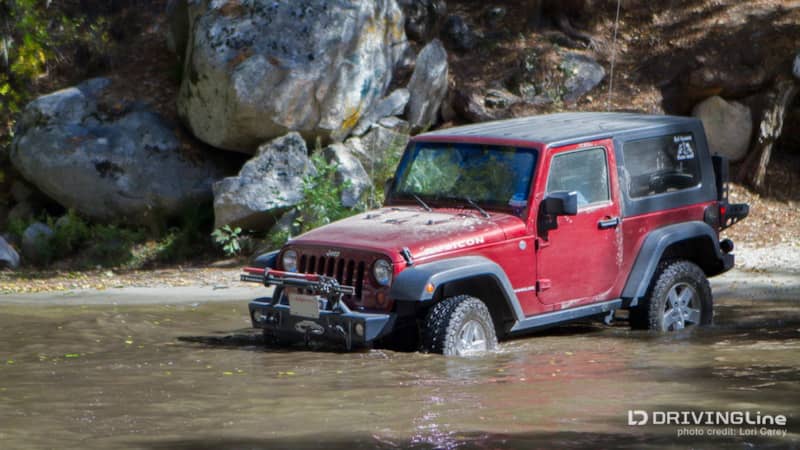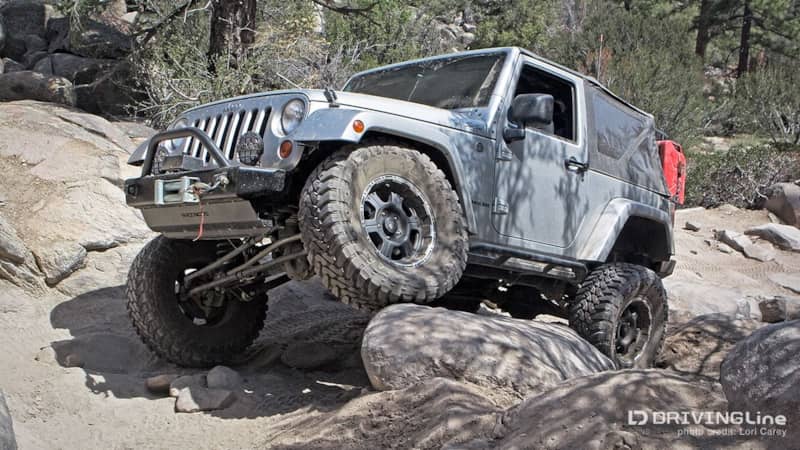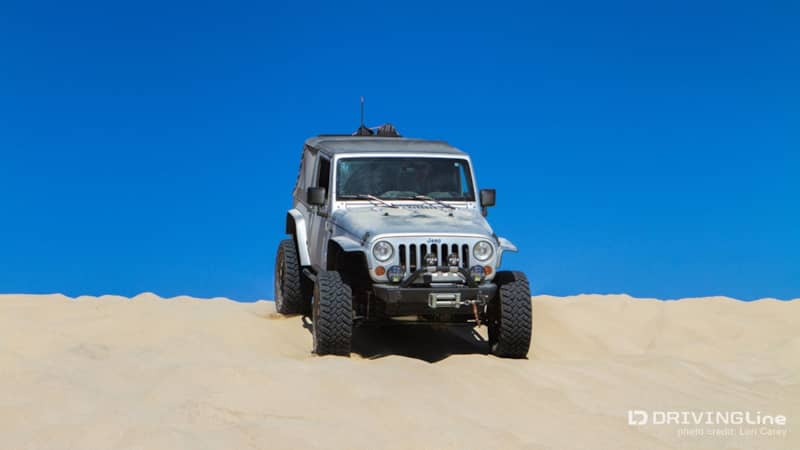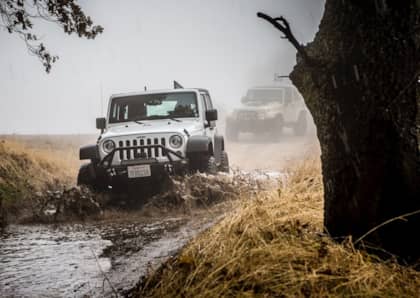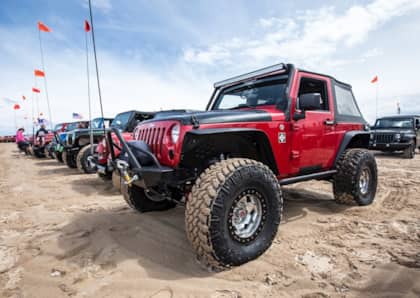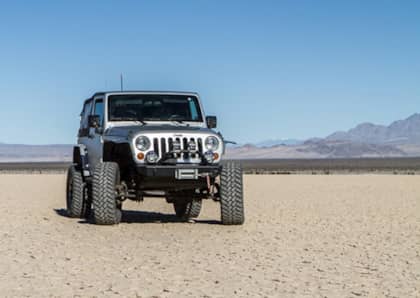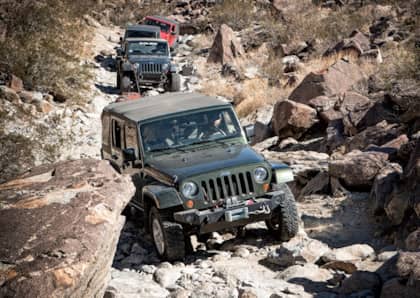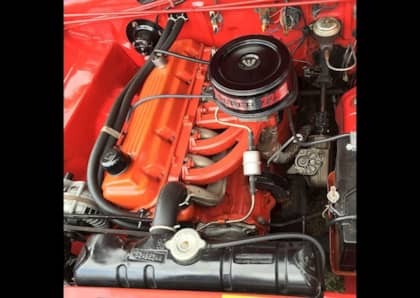Off-Road Basics: Navigating Terrain
Editor's Note: Off-roading can be a dangerous activity and you should never go it alone. Driving Line is providing this Off-Road Basics series to help provide information to those starting out – but we highly encourage getting first-hand experience by joining an off-road club or other experienced drivers (and check out Off-Roading for Dummies: 10 Things You Need to Know). Always be aware of your capabilities and never put yourself or others at risk!
With the proper vehicle, anyone can drive off-road after learning a few basics. When you’re ready to try some more challenging trails here are some of the tips I’ve picked up over the years about navigating terrain:
PREP
1. Know your vehicle.
Know the height and width, understand your 4WD system, know your center of gravity and know your vehicle’s clearance (Approach Angle, Departure Angle and Break-Over). Know your vehicle’s limitations; not every 4WD or SUV is suitable for off-roading.
2. Load your vehicle as evenly as possible.
Too much weight on one side or on a roof rack will affect your vehicle’s center of gravity and make it more prone to rolling over. Too much weight in the rear of the vehicle can affect your clearance.
3. Find out about the local terrain in which you’ll be traveling and understand what type of obstacles you might encounter.
Will you be in deep sand? Will there be big boulders, water crossings, tight passages, mud or snow?
4. Make sure to check the weather forecast before you head out.
You do not want to be caught in a desert wash during a rain storm. Flash floods are common and the raging waters can be deadly. If it starts to rain in the desert you should immediately seek higher ground.
HILLS
1. Make sure you know what is at the crest of a steep hill before climbing it.
If necessary, get out and walk up to check first. Very steep hills can be challenging for many off-roaders.
2. Carefully ascend the hill, keeping the following tips in mind:
- You should always drive straight up a steep incline whenever possible to prevent rolling over. Driving on side slopes at an angle is very risky with a high rollover potential.
- Speed is not the right way to climb a hill. Apply enough power to keep your vehicle moving and try to keep all four wheels on the ground as much as possible.
- If you stall, you should put your vehicle in reverse and back straight down the hill before deciding if you should make another attempt.
- Be especially careful when loose, wet or slippery terrain conditions may cause you to spin out. If your rear end starts sliding to the side you could lose control.
- As you approach the top of the hill let up on the throttle.
3. When descending a steep hill you again want to keep your vehicle heading straight down and avoid allowing the vehicle to turn as much as possible to prevent rolling over.
Let engine compression slow your rate of travel. Avoid riding the clutch or brakes. With an automatic you may need to lightly feather the brakes, but don’t trigger the ABS or allow your brakes to lock up.
CROSSING STREAMS
1. Cross streams only at designated crossing areas.
Don't risk the unknown. Keep your vehicle – and its precious cargo – as safe as possible.
2. Make sure you know how deep the water is before attempting a water crossing, and consider these important tips:
- Do not attempt to cross deep fast moving water – a vehicle can float.
- If the water is above your axles, make sure to know the location of your air intake.
- Never enter water that is above your air intake.
- If you frequently cross deep water, you might want to consider adding a snorkel to your vehicle. A snorkel extends the air intake to above the hood of the vehicle or higher to prevent water from entering the engine.
3. Maintain a slow steady speed, and avoid creating waves.
Moving just fast enough to create a slight bow wave in front of your vehicle helps lower the water in the front where the engine and sensitive electronics are located. You must avoid allowing water to reach your distributor, spark plugs and electronics.
If you stall out in deep water do NOT attempt to restart the engine. You could cause serious damage to your engine. Ease off on the throttle as you exit the water. It’s good practice to dry out your brakes by applying light pressure and driving a short distance. When you get home you should check your differentials and transfer case for water or mud after driving through deep water.
ROCKS
1. Know your ground clearance.
If the rocks are too big to clear your undercarriage and there is no way around them, you have to go over them. Actually most of us enjoy rock crawling and seek out those big boulders.
2. You want to go very slowly when rock crawling.
Ideally 1-3 miles per hour, in 4WD low. You’ll also want to disconnect your Jeep’s swaybar. That will increase your articulation and allow the tires to maintain contact with the ground.
3. Watch ahead of your vehicle, know where the rocks are and know where your tires are in relation to the rocks.
When you first modify your vehicle with a lift and big tires, it can take awhile to learn exactly where those big tires are in relation to your vehicle. Do not straddle big rocks or you could high-center when a rock gets jammed up under your vehicle. You want to keep your tires on the high spots as much as possible by putting your tires on top of the rocks. A good outside spotter can be invaluable when navigating rocky terrain.
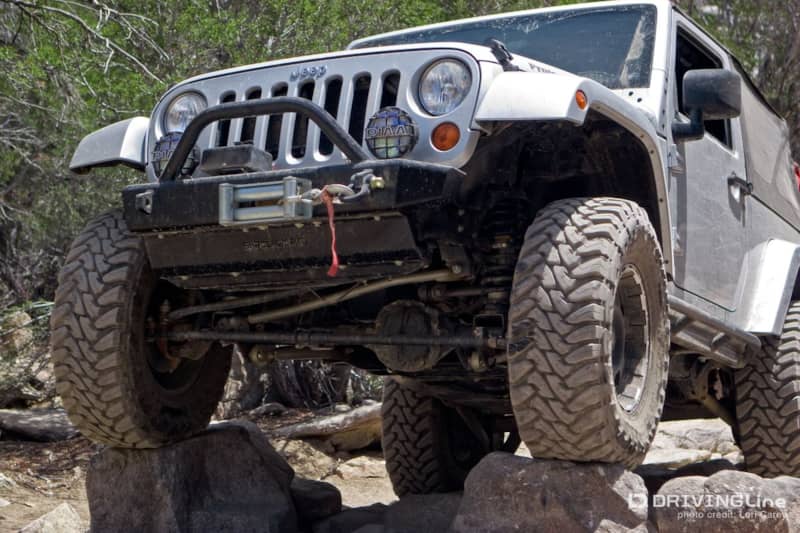
SAND
1. Know what will give you the best traction.
I rarely ever use 4WD in deep sand. Damp or firm sand can be easy to drive on, but loose or deep sand in the desert or on the beach can present a challenge. You might need to experiment with high and low range to determine which will give you the best traction in your driving conditions.
2. Maintain a steady speed in deep, loose sand.
Air down your tires for this.
3. If you get stuck, do not allow your wheels to spin.
Spinning your wheels could could bury your vehicle up to the axles in no time.
BRING BACKUP
1. I repeat – never go off-roading alone.
At the very least, someone can help winch or tow you if you get stuck. Exploring unpredictable or unfamiliar terrain is always safer in company.
2. Have a shovel on hand.
If you get stuck, you can dig out around your wheels.
3. If necessary, have something to put in front of your wheels to aid in traction.
Things like floor mats, blankets or wood can be used in an emergency.
Check out more of Driving Line's Off-Road Basics for the ultimate guide to safe, off-roading fun.




